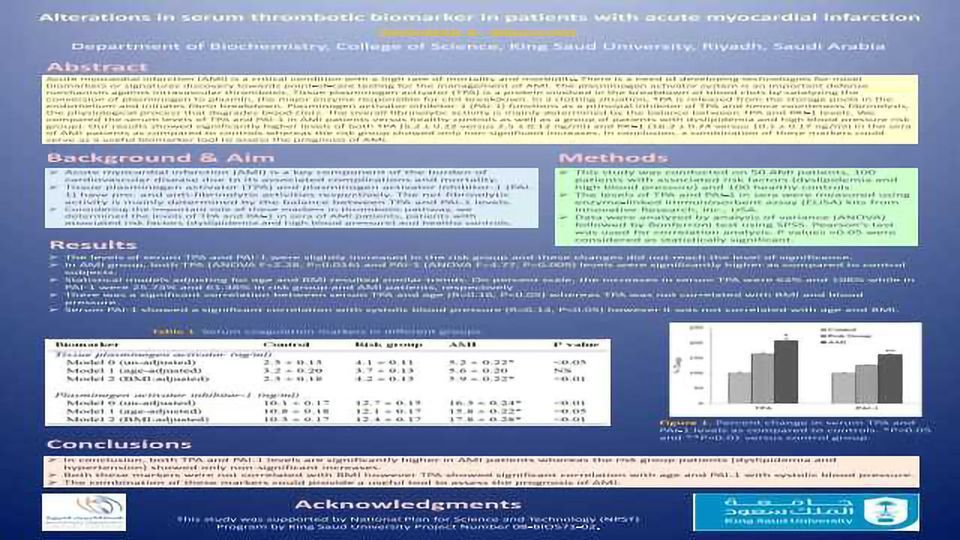Alterations in serum thrombotic biomarker in patients with acute myocardial infarction

Background: Acute myocardial infarction (AMI) is a critical condition with a high rate of mortality and morbidity. There is a need of developing technologies for novel biomarkers or signatures discovery towards point-of-care testing for the management of AMI. The plasminogen activator system is an important defense mechanism against intravascular thrombosis. Tissue plasminogen activator (TPA) is a protein involved in the breakdown of blood clots by catalyzing the conversion of plasminogen to plasmin, the major enzyme responsible for clot breakdown. In a clotting situation, TPA is released from the storage pools in the endothelium and initiates fibrin breakdown. Plasminogen activator inhibitor-1 (PAI-1) functions as a principal inhibitor of TPA and hence counteracts fibrinolysis, the physiological process that degrades blood clots. The overall fibrinolytic activity is mainly determined by the balance between TPA and PAI-1 levels.
Aims: We compared the serum levels of TPA and PAI-1 in AMI patients versus healthy controls as well as a group of patients with dyslipidemia and high blood pressure risk group).
Results: Our results showed significantly higher levels of both TPA (5.2 ± 0.22 versus 2.5 ± 0.13 ng/mL) and PAI-1 (16.3 ± 0.24 versus 10.1 ± 0.17 ng/mL) in the sera of AMI patients as compared to controls whereas the risk group showed only non-significant increases.
Conclusion: A combination of these biomarkers could serve as a useful biomarker tool to assess the prognosis of AMI. (This study was supported by National Plan for Science and Technology Program by King Saud University Project Number 08-BIO571-02).
Aims: We compared the serum levels of TPA and PAI-1 in AMI patients versus healthy controls as well as a group of patients with dyslipidemia and high blood pressure risk group).
Results: Our results showed significantly higher levels of both TPA (5.2 ± 0.22 versus 2.5 ± 0.13 ng/mL) and PAI-1 (16.3 ± 0.24 versus 10.1 ± 0.17 ng/mL) in the sera of AMI patients as compared to controls whereas the risk group showed only non-significant increases.
Conclusion: A combination of these biomarkers could serve as a useful biomarker tool to assess the prognosis of AMI. (This study was supported by National Plan for Science and Technology Program by King Saud University Project Number 08-BIO571-02).




